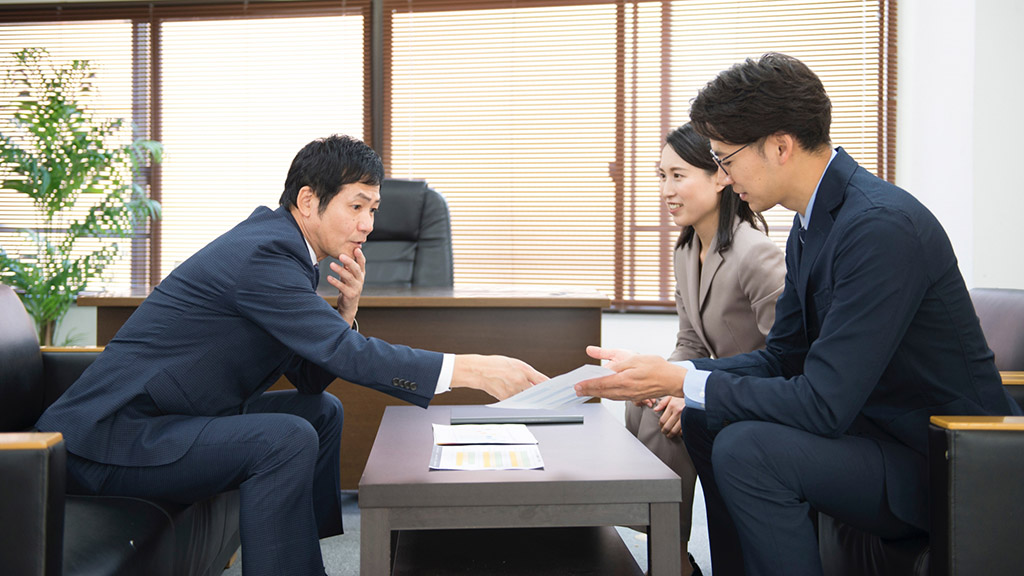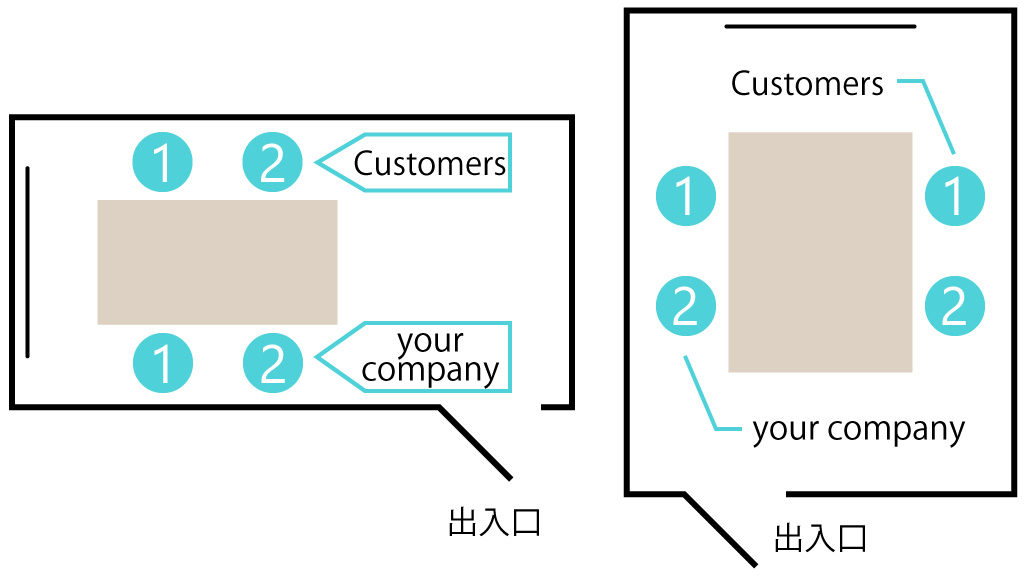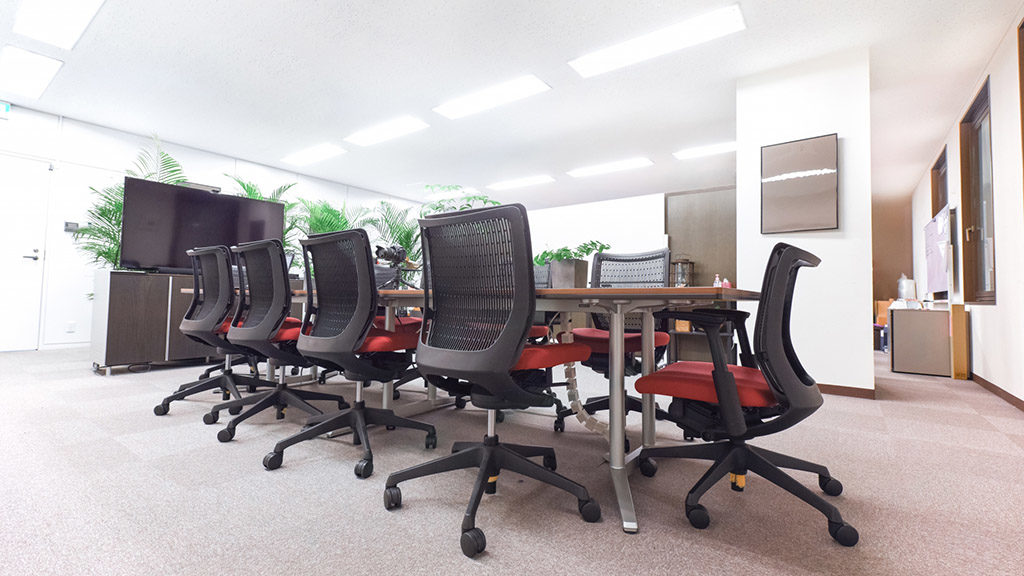Business etiquette for company visits. Basics of wear to sit

This post is also available in 日本語
If you work in Japan, there will be times when you go out to visit clients. Did you know that there is business etiquette related to the seat order when entering meeting rooms? As long as you nail down the basics, you will not face any difficulties when you need to use such etiquette. Today, I would like to introduce “Kamiza” and “Shimoza”.
Contents
Where is “Kamiza” and where is “Shimoza” in the meeting room?
Previously, in “Taxi business etiquette you should know if you work in Japan”, I introduced “Kamiza” and “Shimoza”. There is the same etiquette regarding the seat order in meeting rooms.
Kamiza and Shimoza are “hospitality” etiquette, in which you express respect by offering up the best seats to persons of a rank higher than you. Kamiza is the position where persons of a higher rank (persons with a higher position, such as your superiors, or customers) sit, and the reverse of this is Shimoza, which is the position in which those persons below you in rank (persons with a lower position, such as subordinates, or those hosting entertainment in a business setting).
In the case of a meeting room, seats far from the entrance/exit of that room are kamiza and seats close to the entrance/exit are Shimoza.
Who is in the Kamiza and who is in the Shimoza?

The customers are toward the Kamiza side, and after that the respective internal executives sit in order. In case there are people with the same rank, they will sit in the order of age and higher position. It is simple when inviting customers to your own company, but when visiting the other party, there are times when a more inconventional response is required. You need to pay attention!
When inviting customers to your own company
Customers sit on the far side of the room, and people from your own company sit closest to the door. For example, in the case in which your customer visits with a Section Chief and two ordinary employees, and they are greeted by a Department Chief and ordinary employees from your own company, direct the customers to the far side of the room, and the Section Chief to the seat furthest away, followed by the ordinary employees from the customer next to them. The customers from your own company should be on the near side, and from furthest away, this should be Department Chief and then ordinary employees.
When visiting the other customer
According to the fundamental rules, as you are the “customer”, you should sit on the far side. However, if your company is receiving work, or in a sales position, basically you should sit according to Shimoza. You should then move to Kamiza only when directed to do so by the representative of the other company. However, if the superior you are accompanying sits in Kamiza, you should sit next to them (on the near side).
Saying “please, come this way” is a type of etiquette
You should not get too fixated on Kamiza or Shimoza. Some companies do not pay any attention to Kamiza and Shimoza at all. Depending on the layout of the meeting room, there may be cases where the near side is considered Kamiza. It may be easier to operate facilities used in the meeting from the far side of the room, or there may be objects placed there, so at times one should give consideration to people from the home company sitting on the far side.
For your own company, make sure you check your company rules in advance. When providing guidance, say “please, come this way” so the other party does not get confused.
When you are visiting a company, follow the rules of the other company. If they say “please, come this way”, sit based on this instruction.
Points to note when visiting other companies

When visiting other companies, generally you should request guidance at reception and then wait to be guided to a meeting room.
When thinking about the time that your meeting is due to start, make sure that you arrive early enough in consideration of the time required for reception and guidance. If you do not know what the situation will be like at the other company, make sure that you arrive 10 minutes in advance.
When you arrive at reception, state the name of your company, and give your own name, as well as naming the person that you are due to see. There are cases when there is no reception, but an internal telephone and number chart is provided. In such a case, search for the extension of the other party and call them on the internal telephone.
Stand while you are waiting to be guided. Do not sit until you are told “please have a seat”.
After you are guided to a meeting room, you can sit and wait for the person you are due to see, but as soon as they come into the room, you should stand up to greet them.
Respond according to the situation
The etiquette when visiting companies will differ depending on the relationship between their company and your company, and the rules of the other company. However, as long as you have the basics, you should be able to respond flexibly. Rather than being too rigid, act in accordance with the rules of the other party.
Related products



- Will You Get a Perfect Score? Test Your Knowledge of Japanese Dining Etiquette!
- Can You Answer All The Questions?[Résumé Quiz] – Reasons For Applying, and More (Part 2)
- Don’t Make These Mistakes! 6 Important Business Manners at Work
- How Many Can You Answer? [Résumé Quiz] – Pictures, Information, and More (Part 1)
- [Explained by a Legal Professional] Points to consider when you wish to work in Japan









